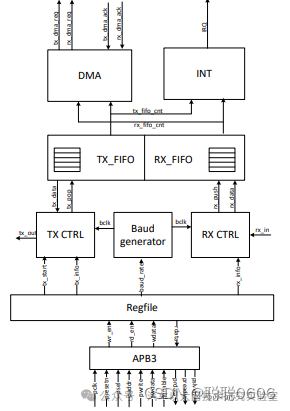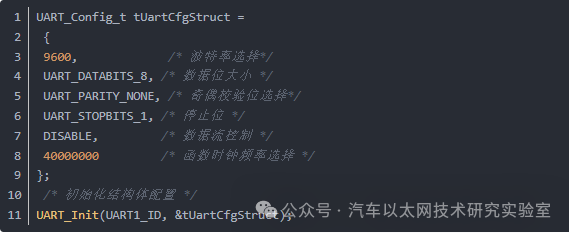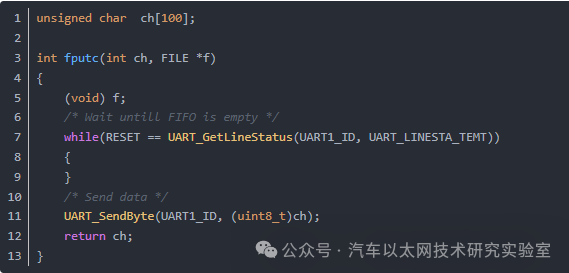
Click the blue words
1. Introduction
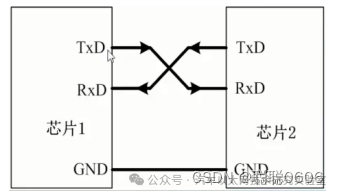
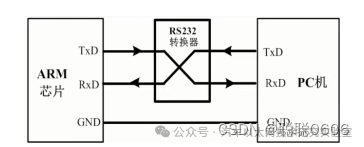
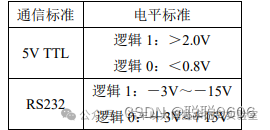
-
Simple: Easy to implement with minimal hardware requirements. -
No clock signal: No need for clock synchronization between devices. -
Widely supported: Extensively supported by microcontrollers and peripheral devices.
-
Distance limitation: Suitable for short-distance communication; long distances are affected by noise and signal attenuation. -
Speed limitation: Data transmission rate is lower compared to synchronous communication protocols like SPI or I2C. -
Single device communication: Primarily designed for point-to-point communication; additional circuits are needed for multi-device communication.
2. Protocol Frame Composition





3. UART Communication Process
-
The sender begins by sending the start bit. -
Immediately follows the data bits (from LSB to MSB). -
If parity is enabled, send the parity bit. -
Finally, send the stop bit.
-
The receiver starts data reception by detecting the start bit (logic low). -
Receives data bits sequentially according to the preset baud rate. -
Checks the parity bit (if any) for error detection. -
After detecting the stop bit (logic high), completes the reception of one data frame.
4. Difference Between USART and UART
|
|
|
|
|
|
|
|
|
|
|
|
-
Sender: Data 0x55 (binary 01010101), baud rate 9600, no parity bit, 1 stop bit. -
Receiver: After detecting the start bit, reads the data bits according to the configured baud rate, checks (if any), and then waits for the stop bit.
-
Sender and receiver share a clock signal. -
Sender: Data 0x55 (binary 01010101), clock frequency of 1MHz. -
Receiver: Reads data bits according to clock frequency, achieving higher transmission rates.
5. Code Implementation
